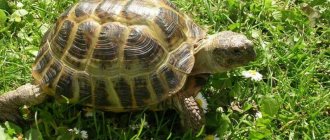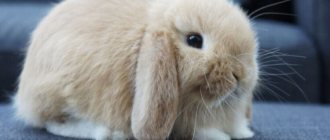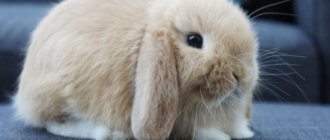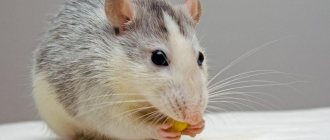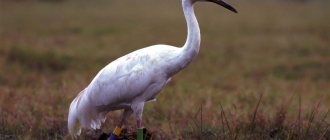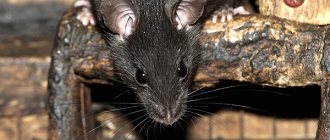Among the many species of ornamental birds, small parrots are the most sought after. This popularity is explained not only by the simplicity of maintenance, but also by the amount of positivity emanating from these birds. Miniature birds are funny, cute and smart. They are excellent conversationalists: they will always listen to their owner and even “support” the conversation. From this material you will learn about the tiniest parrots on the planet: what they look like, where they live in nature, how long they live and what conditions they need.
Budgerigar
The budgerigar is the most famous and popular species of small parrots. It is found in Australia. The budgerigar is easily tamed, is not shy and loves to communicate with people. Males easily learn to repeat words and phrases.
The size of the budgerigar is about 20 cm, body weight is 40-45 g. The natural color of the representatives of the species is green. The head and wings are yellow with a black wave-like pattern, the tail is turquoise. Breeders have bred many breeds that differ in color. The most popular are blue and yellow parrots.
The sex of a budgerigar can be easily determined by the color of the wax beak. In young males it is lilac, in adults it is bright blue. In young females the cere is blue with a light rim around the nostrils; in adult females ready for reproduction, it is brown.
Where can I buy
You can buy a small parrot in a nursery, at the market or in a pet store, as well as from private owners. The cost of a budgerigar in nurseries varies from 600 to 5,000 rubles, and from a private owner you can buy a parrot from 500 to 2,000 thousand rubles.
The price for a lovebird varies from 1,500 to 6,000 thousand rubles, and prices are affected by the region of residence, age and other characteristics of the parrots. If you need to buy a passerine parrot, you will have to spend a large sum, since the price starts from 2.5 thousand rubles, which is due to the rarity of the breed.
Lovebirds
Lovebirds are small parrots that live in Africa and Madagascar. Representatives of this genus are characterized by strong affection between the male and female. In captivity, they can be kept in pairs or alone, but when kept alone, the owner must pay enough attention to the bird.
The body length of lovebirds reaches 10-17 cm, and their weight is 40-60 g. The body is strong, the head is large, the tail is short, and the beak is strong. Color depends on the species; most often the plumage contains green and yellow shades. The genus of lovebirds includes 9 species:
- collar;
- mask;
- red-faced;
- rosy-cheeked;
- grey-headed;
- black-cheeked;
- black-winged;
- Liliana;
- Fisher.
Lovebirds raised by their parents never become completely tame and cannot be trained. To get tame birds, it is necessary to take the chicks from the nest shortly before departure and feed them artificially. Such parrots become strongly attached to their owner, but require a lot of attention and cannot stand loneliness.
Whom to choose
If you plan to purchase a small parrot, then you can choose different breeds, focusing on your own preferences.
But at the same time, the recommendations of experienced breeders are taken into account:
- if there is a desire to teach a wavy to speak, then it is advisable to buy a wavy, and it should be kept alone, not in pairs;
- if a person wants the house to never be quiet, then it is important to choose a couple of lovebirds who chirp or sing a lot, and it is also always pleasant to observe the unusual habits of these birds;
- if a person wants a pet to be calm and pleasant in communication, then he buys a passerine parrot, which not only imitates human speech, but also screams a little.
When choosing, the cost of the parrot is additionally taken into account, since the price for different breeds varies significantly.
Passerine parrot
Passerine parrots are small parrots native to Central and South America. Their body dimensions do not exceed 15 cm, and their weight is 30 g. The body is compact, the tail is short, and the beak is large. Color depends on the species. The natural color includes predominantly green shades, but breeders have developed blue, yellow and cream morphs.
The genus has 7 species:
- parakeet;
- yellow-faced parakeet;
- Mexican parakeet;
- Lesson's parakeet;
- spectacled parakeet;
- blue-winged parakeet;
- dark-billed parakeet.
All representatives of the genus are well tamed and willingly make contact with humans. They are social birds, so it is best to keep them in pairs; When kept alone, the owner must pay a lot of attention to the pet. Passerine parrots have a quiet voice and are not prone to excessive noise. They are able to remember and reproduce human speech (up to 10-15 words).
Interesting Facts
Parrots are very funny birds, with many interesting things associated with them, for example:
- Lovebirds got their name thanks to a beautiful legend, according to which they remain faithful to their partner until the end of their lives.
- Budgerigars can fly at speeds of 120 km/h, see 150 pictures per second and turn their heads 180 degrees.
Small parrots are cheerful, agile and very attractive birds with funny habits and a friendly, sociable disposition. Many of them easily get used to hands and over time learn to copy human speech.
woodpecker parrot
The Woodpecker Parrot is the smallest parrot in the world. Lives in New Guinea and nearby islands. The body length of an adult does not exceed 10 cm, and the weight is 15 g. The body is compact, the head is large, the tail is short, shaped like a woodpecker’s tail. The color of the plumage is predominantly green; Depending on the species, the color may include red, blue, yellow, black and brown.
The genus of woodpecker parrots includes 6 species:
- Bruina;
- Finsha;
- Schlegel;
- Salvadori;
- Meeka;
- Sclater.
Woodpecker parrots get used to humans, but do not become completely tame. They cannot reproduce human speech. These birds should be kept in a spacious enclosure where they can fly. In nature, these parrots feed mainly on nectar, tree sap, fruits and soft shoots of plants. In captivity, their diet should consist of fresh fruits, greens and a liquid mixture of milk, wheat flour, and chopped nuts.
How long do small parrots live?
It is quite difficult to determine the lifespan of birds in the wild. Tame pets can live next to people for quite a long time: from 5 to 20 years. The longest period is given to lovebirds. They live 15 - 18 years, if you create suitable conditions for them. Wavy - a little smaller, about 8 - 10 years. It can be said about passerine and woodpecker parrots that due to their small size they run the risk of dying prematurely. However, under favorable conditions, small birds live in captivity for 5–8 years or even more.
Among the small parrots, budgies and lovebirds stand out especially. The popularity of these birds is undeniable. They noticeably outperform the woodpeckers and passerines.
Fig parrot
Fig parrots are small parrots native to Australia and New Guinea. Their body dimensions do not exceed 14 cm, and their weight is 35 g. The genus includes 2 species: black-cheeked and golden-sided fig parrots. The main body color of representatives of both species is green. The golden-sided parakeet has yellow sides and blue and red feathers on its head and wings. The black-cheeked parrot has a white and blue head with black markings on the cheeks, a red breast, and blue feathers on the wings.
These birds are poorly tamed, do not learn human speech, and are rarely seen in captivity. The basis of their diet in nature is figs and nectar, as well as seeds, flowers, berries and fruits. When kept in captivity, it is important to provide adequate nutrition. Fig parrots will need a spacious cage or aviary where they can fly freely. They are kept in pairs or small groups. Birds have a quiet voice and are not prone to excessive noise.
Description
The habitat of parrots is the tropical and subtropical regions of America and Australia. Various species have their own special, unique color, size, and habits. These birds have won the hearts of bird lovers. And all thanks to their cheerful disposition, curiosity, restlessness, and positivity that they radiate to others.
Content Features
To keep a parrot you will need a rectangular cage. Its size should be such that the bird can freely spread its wings and fly from perch to perch. For ease of cleaning, you should choose a cage with a retractable tray. The cage contains:
- wooden perches of such a diameter that the parrot cannot completely wrap his fingers around them;
- two feeders - for dry and succulent food;
- drinking bowl;
- bathing suit;
- toys (wooden or rope);
- mineral supplements (sepia or special mineral stone).
The cage is placed near the wall at the level of the person’s face. It should not be in a draft or in the aisle. Tamed birds can be released from the cage to walk around the room. The water in the drinking bowl and bathing basin is changed daily or more often as it gets dirty. The diet should include:
- grain mixture;
- vegetables;
- fruits;
- greenery;
- boiled egg;
- low-fat cottage cheese;
- porridge cooked in water;
- insects
You can place branches of fruit trees in the cage, which serve as toys for parrots and a source of nutrients. In addition, birds are offered toys purchased at a pet store or home-made toys. They should be made from natural materials and not contain paint, which may be toxic to birds. Toys can be intended for:
- grinding off beak and claws;
- climbing and hanging (ropes, swings, ladders);
- environmental enrichment (educational toys).
On a note! Toys that make sounds are not recommended to be placed in a cage. They can cause stress in birds and also distract parrots from interacting with humans and remembering words.
Macaw
The top three intellectuals are closed by the Macaw; the male of extraordinary beauty grows up to 50 cm. His beak is huge and curved in a semicircle.
Ara lives up to 60 years.
Homeland - America, has a moat of 36 species.
He can learn up to 20 words, but perfectly imitates rain, barking, etc. He inserts words into a conversation to the point.
Character: calm, but loud voice.
Green warbler (10 cm)
The green warbler is the size of a matchbox, its length is 10 cm. Weight is no more than 6 g. Males and females are practically indistinguishable. These migratory small olive-colored birds inhabit the mountain forests of mid-latitudes in May and fly to India for the winter. They feed on insects, spiders, and small mollusks. They make nests in hollows, crevices, and abandoned burrows. The spacious bag-shaped house, up to 25 cm long, has enough space for three chicks and both parents.
Shy birds do not take root well in captivity; they prefer to live in pairs rather than in a flock. They nurture their offspring until autumn. Birds flock together only before the seasonal migration. The male delights with his sonorous singing from May to the end of July, the female is silent and rarely makes sounds.
Buffy Hummingbird
This cute miniature bird opens the list of representatives of the hummingbird family that settled in the warm regions of the Western Hemisphere. But this is the only species of hummingbird registered in Russia.
They live in the subtropical region on Ratmanov Island, and Soviet scientists first collected information about them in 1976. its natural habitat is North America, but there is evidence that the small bird could fly as far as Wrangel Island.
They grow no more than 8.6 cm, and weigh only 8 grams. They are very hardy and can easily tolerate frosts down to −20°C, as well as travel long distances.
2
Craseonycteris thonglongyai (bat)
A miniature representative of the order Chiroptera grows up to 2.9-3.3 cm and weighs about 1.7 g. A cute animal with a fleshy flat muzzle and small eyes looks a bit like a pig. This similarity is reflected in the name. Otherwise, this bat is no different from other representatives of the order. She has fairly long and wide wings, no tail, and her body is covered with brown fur with a reddish tint. It is the smallest among mammals.
The habitat of these bats is very limited. They are found only in southwest Thailand and some areas of Myanmar. During the day, the creatures gather in groups and sleep in the limestone caves of small hills, and at night they fly out to hunt. They feed mainly on insects. They breed rarely, usually the female gives birth to only one cub per year.
Tama the Cat: Train Station Master
This happened in the early 2000s, when the unprofitable Kishi station in the Japanese city of Kinokawa was almost closed due to unprofitability. Residents, of course, protested, but it is unlikely that their efforts would ultimately be crowned with success. The situation was saved by a local cat named Tama, who loved to bask in the sun near the train station. The station manager noticed how enthusiastically passengers reacted to this couch potato and gave him the official position of caretaker. The cat was given a uniform cap, a badge and a monthly salary in the form of free food.
The duties of the newly minted minister included advertising functions. He greeted passengers, allowed himself to be petted, and was always somewhere on the platform. It must be said that this policy very quickly led to commercial success. Tourists began to come to Kishi station just to look at the railway cat and take pictures with him. From that moment on, there was no further talk about closing the station.
But the unusual cat's career did not end there. In 2008, Tama became a supervisor and was charged with monitoring the performance of professional duties by staff. That same year, the cat was knighted. Another year later, according to the project of the famous designer Eiji Mituku, the railway included in the schedule a train dedicated to the legendary animal. The carriages were painted with views of Tama, the locomotive was decorated with his muzzle, and meowing signaled the opening (closing) of the doors. But this did not become the crown of the cat’s career.
A year later, Tamu was appointed third party of the railway company, entrusted with the post of executive director. By his old age, it was already difficult for him to work every day, and the management allowed the elderly cat to come to work 3 days a week.
Tama died at the ripe old age of 14. But even after this, the career did not end. Posthumously, the cat was elevated to the rank of Eternal Station Master, thus perpetuating his memory. After all, over the years of work, this four-legged employee has brought considerable income to his company. The tourist flow through the station increased to 300 thousand people annually, and the financial indicator amounted to more than 1.1 billion Japanese yen.
The company's management did not want to accept the loss of such a profitable and already promoted advertising brand. Tama was replaced by Nitama (the second Tama). True, later with the third cat there was an overlay. He was found at Okayama Station and offered a position in Kishi. But the owner did not agree to the move. Next came Yontama (the fourth Tama), who had already had to undergo a special training course before taking her place on the platform of the railway station.
And the flow of tourists wanting to take a photo with the legendary heirs of the first Tama still does not dry out.
I like2I don't like
Cockatoo
A good imitator is Cockatoo, grows up to 60 cm, has a strong curved beak, which can damage wooden objects, even thin cage bars.
Life of a cockatoo up to 40 years.
The difference is a large crest of white, yellow or pink color. When excited, the bird will fluff up its crest.
Its homeland is Australia, Indonesia, New Guinea. There are 21 species of these birds.
Kakadu's memory is rather weak, it can remember up to 10 words and 2-3 phrases, but it can perform tricks. But he will imitate the sounds he hears.
A devoted bird cannot stand being alone for a long time; for example, an owner’s business trip can cause her great stress. They may refuse to eat or drink or pluck their feathers.
It is imperative to teach from an early age that if there are small children in the house, it is better to choose another parrot. He doesn't like children and can be aggressive. If you accidentally offend, he bites painfully and takes revenge. He understands only affection and persuasion.
Wren, 12 cm
Another name for the bird is rootstock or nutcracker. It is the only representative of the wren family. You can meet the tiny creature in the countries of America, Eurasia and the north of the African continent.
Wrens are distinguished by their loud singing, which is similar to the chirping of a canary. They settle in deciduous forests, where there is a lot of dead wood, dry grass and shrubs. Occasionally, birds build nests in reeds near water bodies, on the roofs of abandoned houses and barns. Wrens feed on invertebrates, insects, berries and small fish. If threatened, they fall to the ground and hide in the grass.
